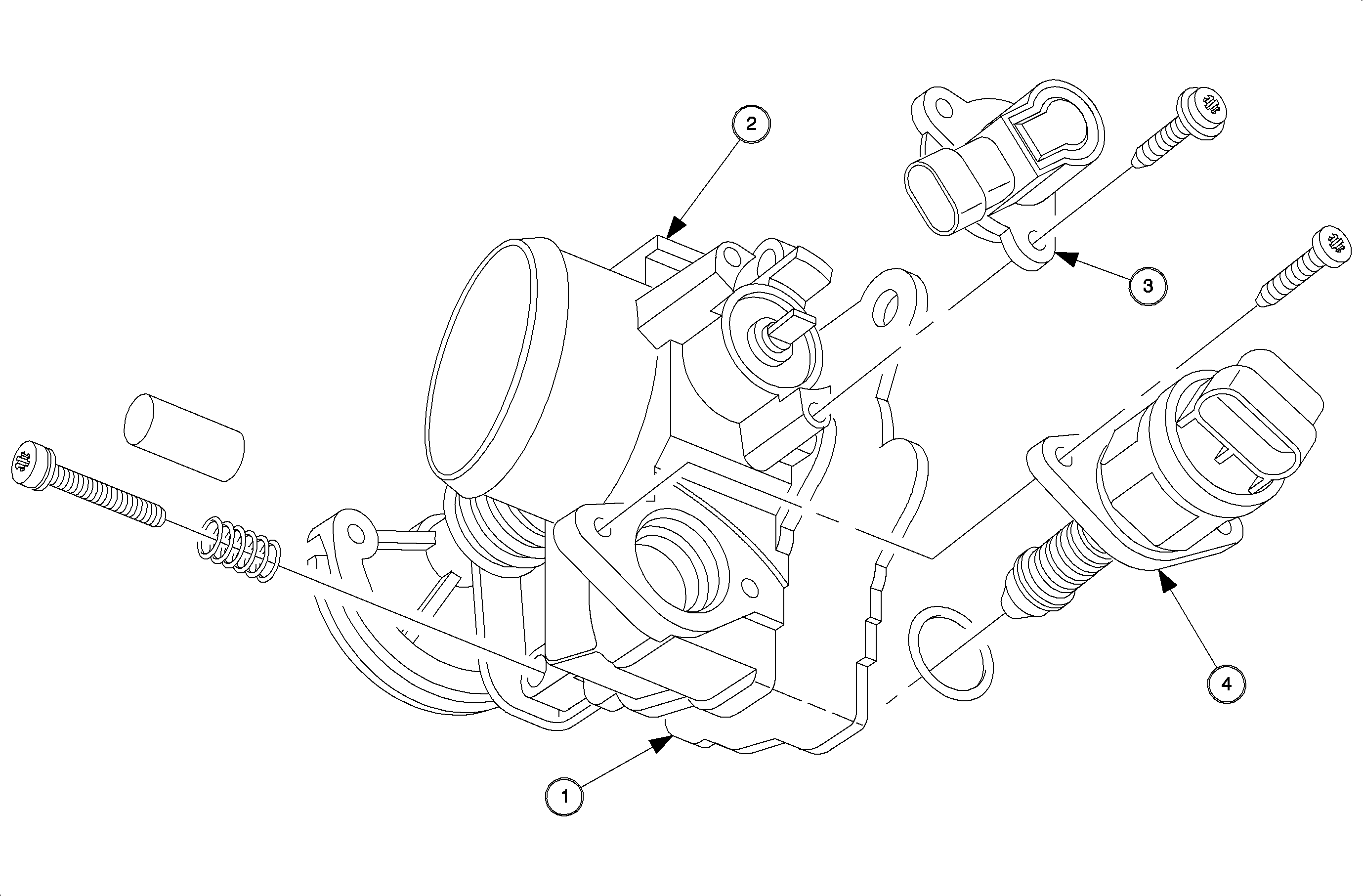
| • | Idle Air/Vacuum Signal Housing Assembly (1) |
| • | Throttle Body Assembly (2) |
| • | Throttle Position (TP) Sensor (3) |
| • | Idle Air Control (IAC) Valve Assembly (4) |
Notice: Residue accumulation can cause a stall after start with a warm engine, stall during acceleration, or a sticky throttle on the vehicle's engine. If it is necessary to clean the throttle body bore/valve, clean the area behind the throttle valve with the engine not running. Use a shop towel and carburetor cleaner that does not contain methyl ethyl ketone. The throttle body area can be cleaned by removing the air intake tube and holding the throttle full open. Use extreme care and do not scratch or damage the throttle body bore/valve. Check the engine idle speed.
The throttle body assembly, attached to the intake manifold air plenum, controls air flow into the engine, thereby controlling engine output. The throttle valve within the throttle body is opened by the driver through the accelerator controls. During engine idle, the throttle valve is almost closed, and air flow is controlled by the idle air control (IAC) valve. To prevent throttle valve icing during cool weather operation, engine coolant is directed through the coolant cavity in the intake manifold. The throttle body also provides the location for mounting the throttle position (TP) sensor. Vacuum ports are located above or below the throttle valve to generate vacuum signals needed by various components.
